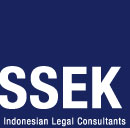11 October, 2017
A number of regulations have been issued that are significant for the regulatory development of Indonesia’s seaports sector. We highlight the most crucial of these regulations.
A. Ministry of Transportation (“MOT”) Regulation No. 146 of 2016 regarding the Amendment of Ministry of Transportation Regulation No. 51 of 2015 regarding the Implementation of Seaports (the “Seaport Regulation”) (“MOT Regulation 146/2016″)
MOT Regulation 146/2016 makes several notable changes to the procedures and requirements to obtain a business license for a Port Business Entity conducting seaport activities as a (i) Main Port (Pelabuhan Utama), (ii) Hub Port (Pelabuhan Pengumpul) or (iii) Feeder Port (Pelabuhan Pengumpan).
The principal change set out by MOT Regulation 146/2016 concerns the administrative requirements to obtain a Port Business Entity business license, as follows:
- a taxpayer registration number (“NPWP”);
- the applicant must be in the form of a state-owned company, a regional-owned company or a limited liability company engaged in the seaport business field;
- a deed of establishment and approval thereof from the Ministry of Law and Human Rights;
- a certificate of domicile;
- an audited financial report by an external auditor for the last year;
- a proposal for a seaport activity plan;
- evidence that the company employs a minimum of two permanent employees with seaport certificates issued or acknowledged by the Director General of Sea Transportation; and
- minimum capital requirement.
The last two points regarding seaport-certified employees and minimum capital are new requirements under MOT Regulation 146/2016.
MOT Regulation 146/2016 stipulates that the minimum capital requirement for Port Business Entities to obtain a business license varies according to the type of port activity. Port Business Entities must now have the following minimum total capital:
- Rp 500 billion for Main Port;
- Rp 100 billion for Hub Port;
- Rp 10 billion for Feeder Port.
The issued and paid-up capital must at least be 25% of the minimum total capital applicable to the relevant Port Business Entity as above. With this stipulation, MOT Regulation 146/2016 revokes the capital ownership threshold previously provided under Article 8 of Ministry of Transportation Regulation No. 45 of 2015 regarding Capitalization Requirement for Business Entities in the Transportation Field.
Specifically in respect to Main Ports and Hub Ports, pursuant to MOT Regulation 146/2016, Port Business Entity Business Licenses are now issued by the Indonesian Investment Coordinating Board (“BKPM”) rather than the MOT as previously regulated by the Seaport Regulation. The relevant governor and regent continue to be responsible for the issuance of Port Business Entity Business Licenses for regional Feeder Ports and local Feeder Ports, respectively.
MOT Regulation 146/2016 also changes the requirements to establish seaports for foreign trade, including changes to the administrative, economic, safety and port facility requirements.
B. Ministry of Transportation Regulation No. 71 of 2016 regarding the Second Amendment of Ministry of Transportation Regulation No. 51 of 2011 regarding Special Purpose Terminal and Private Interest Terminal (“MOT Regulation 71/2016″)
MOT Regulation 71/2016 introduces new provisions that serve to relax the rules for the use of Special Purpose Terminals. In a nutshell, with the permission of the Minister of Transportation, Special Purpose Terminals may now be used to serve the public in the event of an emergency situation. The emergency situations contemplated under MOT Regulation 71/2016 can be in the form of (a) a natural disaster or other situation that causes public seaports to be non-functioning, (b) a seaport is unavailable or the nearest seaport is unable to provide port services due to limited capacity that obstructs the flow of goods.
Permission to use a Special Purpose Terminal to serve the public is given for a maximum period of six months, which may be extended for an emergency situation illustrated in point (a) but may not be extended for a situation illustrated in point (b). The clarity in terms of the duration of the permission is a welcome change brought by MOT Regulation 71/2016, as the previous regulation had no information on how long a Special Purpose Terminal could be used for public purpose.
MOT Regulation 71/2016 also provides that the operation of a Special Purpose Terminal for public purpose due to an emergency situation in point (b) must be based on the mechanism of a concession by changing the status of the relevant port to a public port/terminal operated by a Port Business Entity (Badan Usaha Pelabuhan or “BUP”). Only those Special Purpose Terminals that have been operated for at least five years can be used to serve the public in the event of an emergency.
C. Ministry of Transportation Regulation No. 134 of 2016 regarding Ship and Port Facilities Safety Management (“MOT Regulation 134/2016″)
MOT Regulation 134/2016 was enacted to implement the International Ship and Port Facility Security (ISPS) Code pursuant to Article 170 paragraph (5) of Law No. 17 of 2008 regarding Shipping. The provisions under MOT Regulation 134/2016 apply to port facilities providing services for passenger ships, cargo ships and mobile offshore drilling units.
For further information, please contact:
Dyah Soewito, Partner, Soewito Suhardiman Eddymurthy Kardono
dyahsoewito@ssek.com

.jpg)





